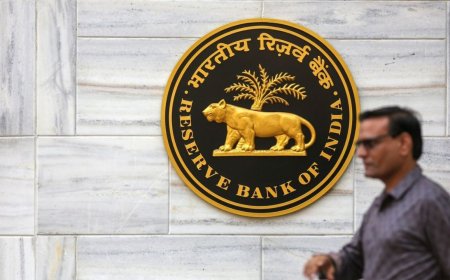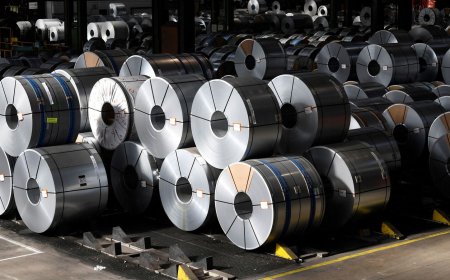India’s hydrogen demand expected to rise at 3 pc CAGR to 8.8 MTPA by 2032
CRISIL projects India’s hydrogen demand to grow at 3% CAGR to 8.8 MTPA by 2032. Learn about sectoral demand, policy shifts, green hydrogen investments, and market outlook.

India's push toward clean energy is gaining momentum, with hydrogen emerging as a critical pillar in the country's energy transition strategy. According to a recent report by CRISIL, the nation’s hydrogen demand is projected to grow at a compounded annual growth rate (CAGR) of 3%, reaching 8.8 million tonnes per annum (MTPA) by 2032, from the current demand of approximately 6.5 MTPA.
Hydrogen: Fueling the Next Energy Revolution
Hydrogen, particularly green hydrogen produced using renewable energy sources, is being globally recognized as a key solution to decarbonize hard-to-abate sectors like steel, refining, fertilizer, and heavy-duty transport. In India, the government has launched the National Green Hydrogen Mission (NGHM) with an ambitious target of producing 5 MTPA of green hydrogen by 2030, backed by an investment outlay of ₹19,744 crore.
"Hydrogen will play a transformative role in reducing India's carbon intensity. As sectors such as refining, fertilizers, and steel decarbonize, demand is likely to gradually shift from grey hydrogen to green hydrogen," said Hetal Gandhi, Director, Research at CRISIL Market Intelligence & Analytics.
Sectoral Consumption: Refining to Remain the Largest Consumer
According to the CRISIL report, refineries currently account for over 50% of India's hydrogen consumption and will remain the largest consumer in the near term. Fertilizer production accounts for about 35%, while the remaining consumption is split among sectors like chemicals and metallurgy.
However, the landscape is poised for change as steel manufacturers and heavy industries begin to integrate green hydrogen into their production lines. "With government mandates pushing for green ammonia and green steel, industrial demand is expected to shift significantly post-2027," the report stated.
India’s Green Hydrogen Aspirations
India's hydrogen roadmap is closely aligned with its 2070 net-zero goal and interim target of reducing emissions by 45% from 2005 levels by 2030. Under the NGHM, India aims to:
-
Set up hydrogen hubs in Gujarat, Karnataka, and Odisha
-
Attract investments worth over ₹8 lakh crore in the green hydrogen value chain
-
Reduce dependence on fossil fuel imports
-
Promote export-oriented production of green hydrogen and its derivatives
The government is also offering incentives under the Strategic Interventions for Green Hydrogen Transition (SIGHT) scheme to boost production and electrolyzer manufacturing capacity.
Market Outlook: Investment Surge on the Horizon
The bullish outlook for hydrogen demand is expected to attract substantial investments in the next five to seven years. CRISIL estimates that more than ₹1.5 lakh crore will be needed to build capacity across production, storage, transport, and application infrastructure.
Private players such as Reliance Industries, Adani Group, Indian Oil Corporation, NTPC, and JSW Energy have already announced green hydrogen projects or partnerships, signaling a strong industry response.
"India is well positioned to become a global hub for green hydrogen, leveraging its solar potential and skilled manpower. However, achieving cost competitiveness and resolving storage and distribution challenges are crucial," said Prateek Aggarwal, Energy Analyst at PwC India.
Challenges on the Road Ahead
Despite the promising outlook, the green hydrogen ecosystem in India is still nascent and faces several hurdles:
-
High production costs: Green hydrogen is currently 2-3x costlier than grey hydrogen
-
Lack of infrastructure: Pipelines, storage facilities, and port handling capabilities are still in development
-
Technology gaps: Electrolyzer manufacturing needs scaling up and innovation to reduce costs
-
Policy clarity: While the NGHM is a strong framework, implementation mechanisms and timelines remain vague in some areas
Industry experts argue that policy support, long-term offtake agreements, and carbon pricing will be essential to accelerate adoption.
Analyst Perspective
“Hydrogen is no longer a distant dream for India. The policy push, global momentum, and industrial readiness are aligning. We believe that by 2032, nearly 30% of the hydrogen consumed in India could be green,” said Arvind Sharma, Senior Researcher at Brookings India.
He added, “The current 3% CAGR may seem moderate, but the real inflection point will come post-2027 once global supply chains mature and electrolyzer costs fall.”
Investor Outlook: Long-Term Potential, Near-Term Volatility
For investors, India’s hydrogen sector presents long-term potential but near-term volatility. While large infrastructure and energy companies are betting big, analysts advise caution.
“Hydrogen projects are capital-intensive and require patient capital. Investors should focus on companies with integrated energy strategies, clear execution roadmaps, and access to global technology partners,” said Anjali Mehra, Clean Energy Analyst at ICICI Securities.
She also noted that hydrogen-linked companies could benefit from rising ESG-driven inflows and government support but cautioned against speculative hype in the short term.
India’s hydrogen demand is on a steady growth path, backed by supportive policy and industrial decarbonization trends. While the 3% CAGR indicates moderate pace, the sector’s strategic importance and future potential remain immense. With concerted efforts from policymakers, industry, and investors, India could not only meet its domestic hydrogen needs but also become a significant global exporter of green hydrogen.
What's Your Reaction?
 Like
0
Like
0
 Dislike
0
Dislike
0
 Love
0
Love
0
 Funny
0
Funny
0
 Angry
0
Angry
0
 Sad
0
Sad
0
 Wow
0
Wow
0













































































